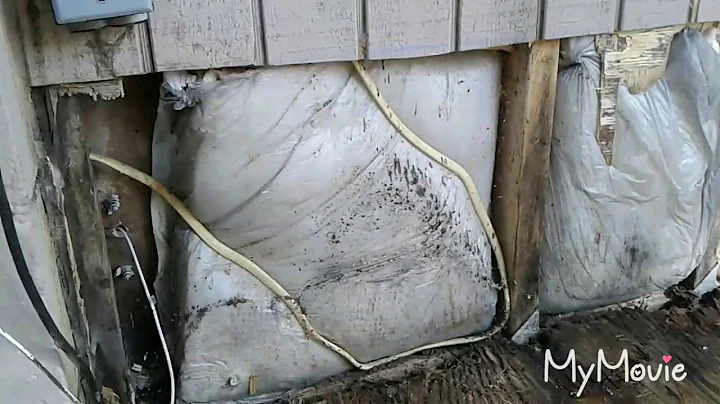Fix Non-Functional Ryobi Table Saw: Step-by-Step Guide
Table of Contents:
- Introduction
- Step 1: Disconnect the power and flip over the table saw
- Step 2: Dismantle the safety switch
- Step 3: Identify the problem with the terminal
- Step 4: Test if bypassing the switch solves the issue
- Step 5: Replace the faulty safety switch
- Conclusion
Troubleshooting and Repairing a Ryobi 10-Inch Table Saw: A Step-by-Step Guide
Introduction
Troubleshooting and repairing power tools can be a challenging yet rewarding task. In this guide, we will walk you through the process of troubleshooting and fixing a common issue with the Ryobi 10-inch table saw - when the saw fails to start despite being plugged in. We will focus on one potential problem: a faulty safety switch. By following the steps outlined below, you will be able to diagnose and resolve this issue effectively.
Step 1: Disconnect the power and flip over the table saw
Before beginning any repairs, it is crucial to prioritize safety. Begin by disconnecting the power source to avoid any potential electrical hazards. Once the power is disconnected, carefully flip over the table saw. This will provide access to the internal components where the safety switch is located.
Step 2: Dismantle the safety switch
The safety switch is a key component that ensures the table saw operates only when it is safe to do so. However, in some cases, the safety switch itself may malfunction. To identify if this is the root cause of the issue, you will need to dismantle the safety switch. Using a Phillips screwdriver, remove the screws that hold the switch in place. Take note of the safety precautions and verify that all connections are properly disconnected before proceeding.
Step 3: Identify the problem with the terminal
Upon removing the cover of the safety switch, inspect the terminals for any signs of damage or malfunction. Look for any black marks or displaced connectors, as these are indicators of issues. In the case of the Ryobi table saw, you may notice a darkened and displaced terminal. This signifies a problem within the safety switch.
Step 4: Test if bypassing the switch solves the issue
To confirm that the safety switch is indeed causing the problem, a bypass test can be conducted. However, it is essential to exercise extreme caution, as this involves bypassing a safety feature. Prepare jumpers that will connect the hot wires and the neutral wires, effectively bypassing the switch. Take extra care to ensure the jumpers do not damage the terminals. Once the jumpers are in place, plug in the table saw from a safe distance and be ready to disconnect it immediately if necessary. If the saw starts working after bypassing the switch, it confirms that the safety switch is the source of the problem.
Step 5: Replace the faulty safety switch
With the root cause identified, the next step is to replace the faulty safety switch. Refer to the part number provided by the manufacturer or search for Ryobi table saw replacement parts online. Acquire the appropriate replacement switch and carefully install it, following the reverse order of the dismantling process. Ensure all connections are secure before testing the table saw once again.
Conclusion
Troubleshooting and repairing a Ryobi 10-inch table saw can seem daunting, but by following the steps outlined in this guide, you can diagnose and fix the issue of a non-functional table saw. Remember to prioritize safety throughout the process and exercise caution when bypassing any safety features. Good luck with your repair endeavor, and may it successfully resolve the problem with your Ryobi table saw.
Pros:
- Provides a detailed step-by-step guide for troubleshooting and repairing a common issue with the Ryobi 10-inch table saw.
- Emphasizes the importance of safety precautions throughout the repair process.
- Offers clear instructions on how to dismantle the safety switch and identify potential problems.
- Includes a bypass test to confirm if the safety switch is indeed the cause of the issue.
- Recommends replacing the faulty safety switch with appropriate manufacturer-recommended parts.
Cons:
- The guide focuses on one specific issue with the Ryobi table saw and may not cover all possible problems.
- Additional issues or complications may arise during the troubleshooting and repair process, which are not addressed in this guide.
Highlights:
- Troubleshooting and repairing a Ryobi 10-inch table saw
- Step-by-step guide for identifying and fixing a non-functional table saw
- Importance of safety precautions and proper handling of power tools
- Dismantling the safety switch and identifying potential problems
- Bypass test to confirm the faulty safety switch
- Replacement of the safety switch with manufacturer-recommended parts
FAQ:
Q: Are there any other common issues with the Ryobi 10-inch table saw?
A: While this guide focuses on one specific problem, other potential issues can affect the table saw's performance. If the troubleshooting steps outlined here do not resolve the problem, it is advisable to consult the manufacturer's manual or seek professional assistance to address the specific issue.
Q: Can I repair the safety switch myself?
A: Yes, the guide provides instructions on troubleshooting and replacing the safety switch. However, it is crucial to prioritize safety and exercise caution throughout the repair process. If you are uncertain or uncomfortable with handling power tools or electrical components, it is recommended to seek professional help.
Q: Where can I find the replacement parts for the Ryobi table saw?
A: The guide suggests referring to the part number provided by the manufacturer or searching for Ryobi table saw replacement parts online. This ensures you acquire the appropriate replacement switch for your specific model. Retailers that specialize in power tools and hardware stores may also carry Ryobi replacement parts.
Resources:







